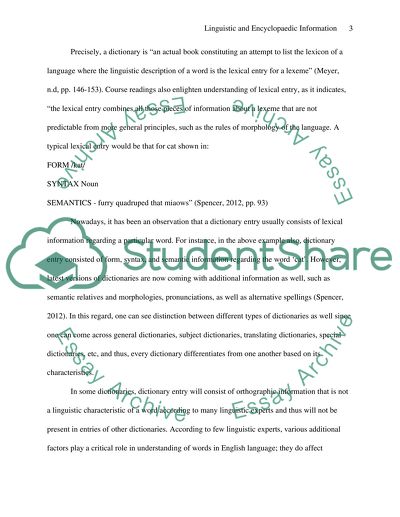Cite this document
(“Linguistic and Encylopaedic Information Essay Example | Topics and Well Written Essays - 3000 words”, n.d.)
Linguistic and Encylopaedic Information Essay Example | Topics and Well Written Essays - 3000 words. Retrieved from https://studentshare.org/english/1471270-what-information-is-contained-in-a-dictionary
Linguistic and Encylopaedic Information Essay Example | Topics and Well Written Essays - 3000 words. Retrieved from https://studentshare.org/english/1471270-what-information-is-contained-in-a-dictionary
(Linguistic and Encylopaedic Information Essay Example | Topics and Well Written Essays - 3000 Words)
Linguistic and Encylopaedic Information Essay Example | Topics and Well Written Essays - 3000 Words. https://studentshare.org/english/1471270-what-information-is-contained-in-a-dictionary.
Linguistic and Encylopaedic Information Essay Example | Topics and Well Written Essays - 3000 Words. https://studentshare.org/english/1471270-what-information-is-contained-in-a-dictionary.
“Linguistic and Encylopaedic Information Essay Example | Topics and Well Written Essays - 3000 Words”, n.d. https://studentshare.org/english/1471270-what-information-is-contained-in-a-dictionary.


